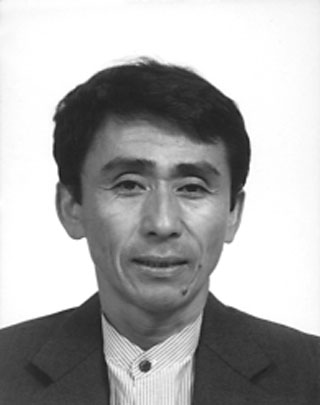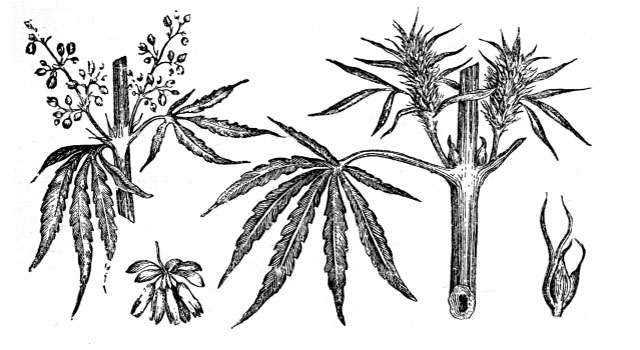 |
95
Interview
Dr. Yukihiro Shoyama
Professor Shoyama is a pharmacognosist (plant drug chemist) working at Kyushu University in Japan. His specialty interest, and the subject of several fundamental publications, is the biogenesis of cannabinoids in Cannabis. The latest contributions from his lab involve definitive proof, via enzyme isolation, of the biosynthesis of each individual major cannabinoid. This "e-mail interview" was conducted by Dave Pate and Rob Clarke on November 6, 1997.
 |
Can you give us something of your academic background?
I was born in 1943 in China and then my family moved back to Hiroshima Prefecture. I graduated from Fukuoka University in 1966, then moved to graduate school at Kyushu University and received my Ph.D. degree. The title of my dissertation was "Pharmacognosical Studies on Marijuana", completed in 1974. I became an associate professor at Kyushu University in 1978 and made full professor in 1991.
How long have you had an interest in Cannabis and what is its origin?
I have been interested in Cannabis projects since 1966, but I changed my major job to the tissue culture of medicinal plants from 1978 to 1990, except for the breeding of Cannabis strains, then restarted the marijuana project in 1991 when I became a full professor.
How did your career develop?
My first study on Cannabis was the selection of a strain containing CBDA from a Japanese native variety and I managed to stabilize this strain (we called it "non-toxic") which was the origin of the ‘Tochigi-shiro’ cultivar, now registered with the Ministry of Agriculture, Forestry and Fisheries. This was bred with a high quality of fiber strain, ‘Tochishu No. 1’ which contains THCA. During this project, I isolated new cannabinoids and elucidated their chemical structures. My interest for Cannabis also included continuing with investigating the biosynthesis of cannabinoids.
How many graduate students and post-doctoral fellows have studied Cannabis in your laboratory?
The staff members that work on Cannabis in my laboratory include an associate professor, two assistant professors, and a graduate student.
How is your work funded?
Mainly I get funding from the Japanese government and from some private companies.
Are there other Cannabis research programs in Japan?
Yes, but they are very rare, only those of Prof. I. Yamamoto’s group at Hokuriku University, Associate Prof. T. Yamamoto in Kyushu University, and Prof. Fujiwara’s group in Fukuoka University.
Does the Japanese government impose restrictions on you as a Cannabis researcher?
No. They do not restrict our research of Cannabis, but we need a license for Cannabis research in Japan.
What topics concerning Cannabis have you previously studied in your laboratory?
In addition to the ones already roughly indicated, we tried biotrans-formation of cannabinoids by using plant cell culture and production of monoclonal antibodies against cannabinoids, which can be used for an assay system for the above bio-transformed cannabinoids, and to differentiate marijuana samples from other plant samples. Also, we established an assay system for Cannabis pollen, which can be completely distinguished from other plant pollen samples, using Immunoglobulin E from my own blood plasma, because I am an allergy patient, sensitive to Cannabis pollen.
Which line of research has yielded the most significant results in terms of our understanding of Cannabis?
It is probably the purification of the actual THCA, CBDA and CBCA synthase enzymes.
What are you working on now?
We are now cloning the cDNA of these synthases. Thereafter, it may be possible to express such biosynthetic enzymes by transformed cells, resulting in the production of new cannabinoids by an in vitro system.
Various theoretical pathways for the biosynthesis of cannabinoids have been proposed by you and other researchers. Do you have any new theories on the biosynthesis of the cannabinoids?
Yes. As we published in J. Am. Chem. Soc. 117: 9766 (1995), J. Biol. Chem. 271: 17411 (1996), and J. Nat. Prod. 60: 854 (1997), we found that the biosynthetic pathways of CBGA to CBDA, CBGA to THCA, and CBGA to CBCA exist individually.
Do you think that your results showing the direct conversion of CBGA to THCA is representative of the genus as a whole, or could some strains convert CBDA to THCA?
The conversion of CBGA to THCA can be catalyzed by THCA synthase in all strains containing THCA that we tested.
How many different accessions of Cannabis do you grow?
Now we mainly cultivate a CBDA strain bred in my laboratory and a Mexican THCA strain. But if possible, we will grow CBDVA (propyl CBDA) or THCVA (propyl THCA) strains from Thailand and the so-called "Meao strain" from which we have also isolated several new cannabinoids having this propyl group as a side chain.
Have you ever found direct evidence of a "CBDA cyclase"?
We tried the transformation of CBDA to THCA, using various Cannabis strains, but we could not find such an enzyme activity. Therefore, we conclude that there is probably no "CBDA cyclase" enzyme.
In one of your early papers (Phytochemistry 14: 2189-92, 1975, Table 2, Exp. no. 10), you showed good conversion of radiolabled CBDA to THCA in a Mexican variety.
Yes, we showed this conversion ratio, but it did not have a high incorporation ratio. I suppose it might have occurred from contamination during purification.
Has Cannabis ever been used as a medicine in Japan?
No. There is no indication of its traditional medical use in Japan, but historically, the Japanese pharmacopoeia included marijuana as a sedative and painkilling drug until 1951. Thereafter, medical use of Cannabis was highly restricted.
What do you think about the medical potential of Cannabis?
Since two receptors have been found, CB1 in the brain and CB2 in the periphery, and their corresponding natural ligands have also been found, I believe some cannabinoids, including synthetic compounds, will be developed for drugs related to treatment of the brain or immune system.
Do you see the very limited use of cannabinoids in medicine as the result of their intrinsic medicinal value or as the result of restrictions surrounding them?
I suppose the later reason inhibits the development of medicine from marijuana compounds because almost all countries prohibit the medicinal use of marijuana.
What Cannabis research would you personally find most interesting given the appropriate funding?
I believe that drug discovery from a marijuana-related project is in demand and a most important subject, and we would like to concentrate on this.
What do you feel will be the greatest benefit of Cannabis to humanity?
My dream is the creation of a useful marijuana-derived or synthetic painkilling drug, without significant side effects, for cancer patients.
Do you have any final comments on the future of Cannabis?
I hope the population of Cannabis researchers increases, that various fields related to Cannabis become evident and that everyone can someday accept Cannabis as an important resource for humanity, as they now do Papaver (poppy) species.
Thank you.
